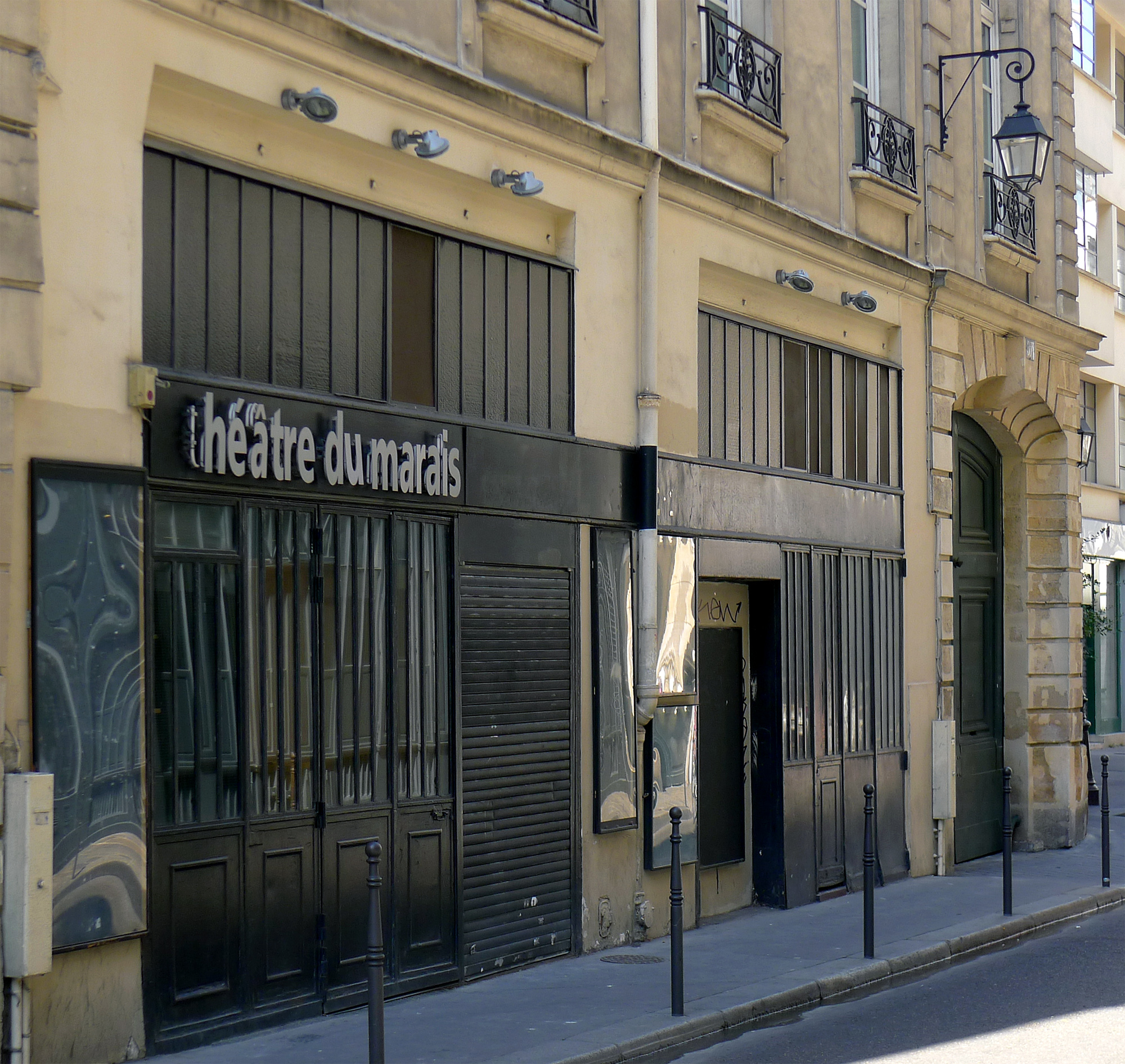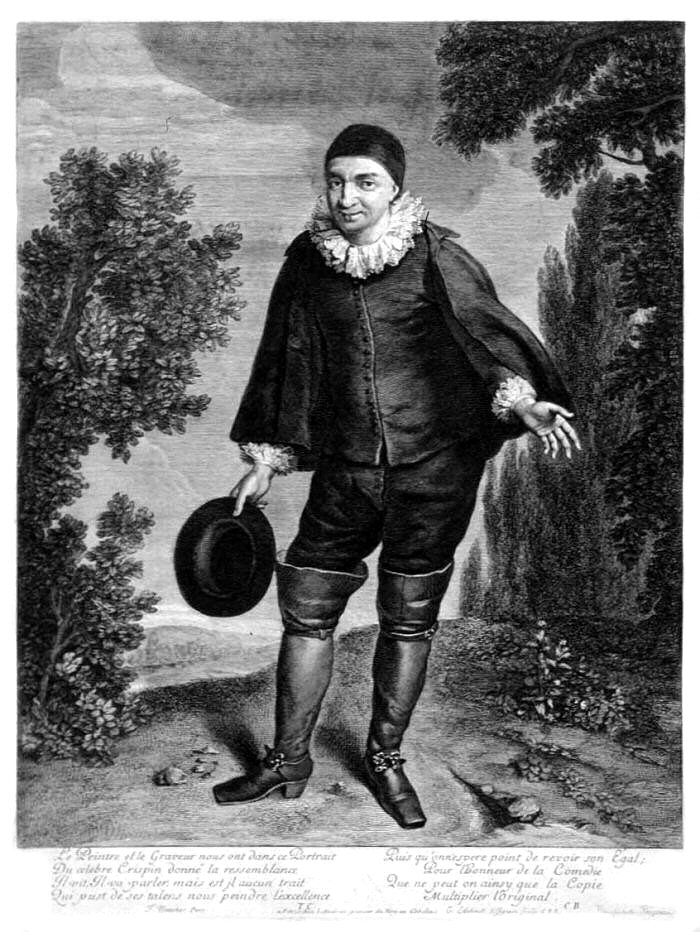|
Mlle Beauchateau
Madeleine de Pouget, stage name Mademoiselle Beauchateau (1611–1683), was a French stage actress. Scott, Virginia (2010). '' Women on the stage in early modern France : 1540-1750''. Cambridge: Cambridge University Press. . According to an anecdote, she was the natural child of “a demoiselle of good family and a magistrate.” She was married to the actor Francois Chastelet, stage name Beauchateau. In 1628 the Grands Comediens ( Comédiens du Roi) was established at the Hôtel de Bourgogne. Initially, only the male actors are named, but in 1630 three actresses are mentioned: Nicole Gassot (Mlle Bellerose), Madeleine de Pouget (Mlle Beauchateau) and Jeanne Buffequin (Mlle La Fleur). She was engaged at the Théâtre du Marais in 1634. She was a prominent actress of the theatre. She created the role of the Infante in Pierre Corneille’s ''Le Cid''. According to Paul Scarron, she wrote the prose version of François Tristan l'Hermite François l'Hermite (c. 16017 ... [...More Info...] [...Related Items...] OR: [Wikipedia] [Google] [Baidu] |
Hôtel De Bourgogne (theatre)
Hôtel de Bourgogne was a theatre, built in 1548 for the first authorized theatre troupe in Paris, the Confrérie de la Passion. It was located on the rue Mauconseil (now the rue Étienne Marcel in the 2nd arrondissement of Paris), on a site that had been part of the residence of the Dukes of Burgundy (the former Hôtel de Bourgogne). The most important French theatre until the 1630s, it continued to be used until 1783,Forman 2010, p. 134 ("Hôtel de Bourgogne"). after which it was converted to a leather market and eventually totally demolished. The Confrérie performed farce and secular dramas, but lacking great success, began renting the theatre to itinerant acting companies, including Italian ''commedia dell'arte'' troupes, who introduced the characters Harlequin and Pantalone, as well as burlesque. In 1628, a French company, the Comédiens du Roi, became permanently established and performed many of the classics of French theatre, including ''Andromaque'' and ''Phèdre'' by ... [...More Info...] [...Related Items...] OR: [Wikipedia] [Google] [Baidu] |
Mlle Bellerose
Nicole Gassot, known under her stage name Mademoiselle Bellerose (1605 – 1679), was a French stage actress. She was the daughter of the actor Jean Gassot, stage name La Fortune. She and her father were members of the same theatre company as Mondory in March 1618. She first married the actor Mathias Meslier, and secondly in 1630 the actor Pierre Le Messier, stage name Bellerose. In 1628 the Grands Comediens ( Comédiens du Roi) was established at the Hôtel de Bourgogne. Initially, only the male actors are named, but in 1630 three actresses are mentioned: Nicole Gassot (Mlle Bellerose), Madeleine de Pouget (Mlle Beauchateau) and Jeanne Buffequin (Mlle La Fleur). Scott, Virginia (2010). '' Women on the stage in early modern France : 1540-1750''. Cambridge: Cambridge University Press. . She was engaged at the Hôtel de Bourgogne between 1630 and 1660. She was a star attraction of the theatre and described as the perhaps most popular stage actress of the theatre at ... [...More Info...] [...Related Items...] OR: [Wikipedia] [Google] [Baidu] |
Théâtre Du Marais
The Théâtre du Marais has been the name of several theatres and theatrical troupes in Paris, France. The original and most famous theatre of the name operated in the 17th century. The name was briefly revived for a revolutionary theatre in 1791, and revived again in 1976. The present-day Théâtre du Marais operates at 37, rue Volta in the 3rd arrondissement of Paris. First incarnation (1634–1673) The Théâtre du Marais was founded in 1634, at which time there had been only one theatre company in Paris, the '' comédiens du Roi'' ("comedians of the King"), at the Hôtel de Bourgogne. The actors Charles Lenoir and Montdory decided to create their own troupe, and situated it in the fashionable Le Marais district of Paris, where they converted the Jeu de Paume des "Maretz", an unused tennis court on the Vieille Rue du Temple opposite the Capuchins, into a theatre.Scott 2000, p. 40. The new theatre's repertory was made up mainly of farces by Jodelet and works by Pierre Corn ... [...More Info...] [...Related Items...] OR: [Wikipedia] [Google] [Baidu] |
Pierre Corneille
Pierre Corneille (; 6 June 1606 – 1 October 1684) was a French tragedian. He is generally considered one of the three great seventeenth-century French dramatists, along with Molière and Racine. As a young man, he earned the valuable patronage of Cardinal Richelieu, who was trying to promote classical tragedy along formal lines, but later quarrelled with him, especially over his best-known play, ''Le Cid'', about a medieval Spanish warrior, which was denounced by the newly formed ''Académie française'' for breaching the unities. He continued to write well-received tragedies for nearly forty years. Biography Early years Corneille was born in Rouen, Normandy, France, to Marthe Le Pesant and Pierre Corneille, a distinguished lawyer. His younger brother, Thomas Corneille, also became a noted playwright. He was given a rigorous Jesuit education at the ''Collège de Bourbon'' (Lycée Pierre-Corneille since 1873), where acting on the stage was part of the training. At 18 he ... [...More Info...] [...Related Items...] OR: [Wikipedia] [Google] [Baidu] |
Paul Scarron
Paul Scarron (c. 1 July 1610 in Paris – 6 October 1660 in Paris) (a.k.a. Monsieur Scarron) was a French poet, dramatist, and novelist, born in Paris. Though his precise birth date is unknown, he was baptized on 4 July 1610. Scarron was the first husband of Françoise d'Aubigné, who later became Madame de Maintenon and secretly married King Louis XIV of France. Life Scarron was the seventh child of Paul Scarron, a noble of the robe and member of the Parlement of Paris, and Gabrielle Goguet. Paul became an abbé when he was nineteen. He lived in Le Mans from 1632 to 1640, and in 1635 traveled to Rome with his patron, Charles de Beaumanoir, the bishop of Le Mans. Finding a patron in Marie de Hautefort, maîtresse-en-titre of Louis XIII, he became a well-known figure in literary and fashionable society. In 1638, Scarron became disabled. One source (Laurent Angliviel de la Beaumelle, ''Memoires... de Mme de Maintenon'') attributed Scarron's deformities to rheumatism contrac ... [...More Info...] [...Related Items...] OR: [Wikipedia] [Google] [Baidu] |
François Tristan L'Hermite
François l'Hermite (c. 16017 September 1655) was a French dramatist who wrote under the name Tristan l'Hermite. He was born at the Château de Soliers in the Haute Marche. Life His adventures began early, for he killed his enemy in a duel at the age of thirteen, and was obliged to flee to England. The story of his childhood and youth he embroiders in a burlesque novel, the . He was, in succession, poet to Gaston d'Orléans, to the duchesse de Chaulnes and the duke of Guise. His first tragedy, ''Marianne'' (1636), was also his best. It was followed by ''Penthée'' (1637), ''La Mort de Seneque'' (1644), ''La Mort de Crispe'' (1645) and the ''Parasite'' (1654). He was also the author of some admirable lyrics. Three of his best plays are printed in the ''Théâtre français'' of 1737. He took his pseudonym from Tristan l'Hermite, a shadowy figure of the late Middle Ages who was provost of the marshals of the King's household under Louis XI of France. He died due to tuberc ... [...More Info...] [...Related Items...] OR: [Wikipedia] [Google] [Baidu] |
Raymond Poisson
Raymond Poisson (1630–1690) was a French actor and playwright. Mainly a comic actor, he used the stage names Crispin in comedy and Belleroche in tragedy.Gaines 2002, p. 374. Career Poisson joined the company of the Hôtel de Bourgogne in Paris, primarily as a comic rival to Molière, who played at the Palais-Royal. As a comedian Poisson wore a black servant costume in a Spanish style and was noted for his stutter.Hartnoll 1983, p. 73 ("Belleroche"). He appropriated the character of Crispin from Scarron's ''L'Écolier de Salamanque'' (1654), playing it himself, and wrote and appeared in ''Lubin'' (1660) and ''Le Baron de la Crasse'' (1661). He became a founding member of the Comédie-Française in 1680.Hartnoll 1983, p. 169 ("Comédie-Française"). His son Paul and his grandsons Philippe and Francois-Arnoul all became actors, whilst his granddaughter Madeleine-Angélique de Gomez became a writer. Notes Bibliography * Curtis, A. Ross (1972). Crispin Ier : la vie et l'œuvr ... [...More Info...] [...Related Items...] OR: [Wikipedia] [Google] [Baidu] |
1611 Births
Events January–June * February 27 – Sunspots are observed by telescope, by Frisian astronomers Johannes Fabricius and David Fabricius. Johannes publishes the results of these observations, in ''De Maculis in Sole observatis'' in Wittenberg, later this year. Such early discoveries are overlooked, however, and the first sighting is claimed a few months later, by Galileo Galilei and Christoph Scheiner. * March 4 – George Abbot is enthroned as Archbishop of Canterbury. * March 9 – Battle of Segaba in Begemder: Yemana Kristos, brother of Emperor of Ethiopia Susenyos I, ends the rebellion of Melka Sedeq. * April 4 – Denmark-Norway declares war on Sweden, then captures Kalmar. * April 28 – The ''Colegio de Nuestra Señora del Santísimo Rosario'' is established in Manila, the Philippines (later renamed Colegio de Santo Tomas, now known as the University of Santo Tomas). * May 2 – The Authorized King James Version of the Bible is ... [...More Info...] [...Related Items...] OR: [Wikipedia] [Google] [Baidu] |
1683 Deaths
Events January–March * January 5 – The Brandenburger—African Company, of the German state of Brandenburg, signs a treaty with representatives of the Ahanta tribe (in what is now Ghana), to establish the fort and settlement of Groß Friedrichsburg, in honor of Frederick William, Elector of Brandenburg. The location is later renamed Princes Town, also called Pokesu. * January 6 – The tragic opera '' Phaëton'', written by Jean-Baptiste Lully and Philippe Quinault, is premiered at the Palace of Versailles. * January 27 – Gove's Rebellion breaks out in the Province of New Hampshire in North America as a revolt against the Royal Governor, Edward Cranfield. Most of the participants, and their leader Edward Gove, are arrested. Gowe is convicted of treason but pardoned three years later. * February 7 – The opera '' Giustino'' by Giovanni Legrenzi and about the life of the Byzantine Emperor Justin, premieres in Venice. * March 14 – Age ... [...More Info...] [...Related Items...] OR: [Wikipedia] [Google] [Baidu] |
17th-century French Actresses
The 17th century lasted from January 1, 1601 ( MDCI), to December 31, 1700 ( MDCC). It falls into the early modern period of Europe and in that continent (whose impact on the world was increasing) was characterized by the Baroque cultural movement, the latter part of the Spanish Golden Age, the Dutch Golden Age, the French ''Grand Siècle'' dominated by Louis XIV, the Scientific Revolution, the world's first public company and megacorporation known as the Dutch East India Company, and according to some historians, the General Crisis. From the mid-17th century, European politics were increasingly dominated by the Kingdom of France of Louis XIV, where royal power was solidified domestically in the civil war of the Fronde. The semi-feudal territorial French nobility was weakened and subjugated to the power of an absolute monarchy through the reinvention of the Palace of Versailles from a hunting lodge to a gilded prison, in which a greatly expanded royal court could be more easily k ... [...More Info...] [...Related Items...] OR: [Wikipedia] [Google] [Baidu] |





